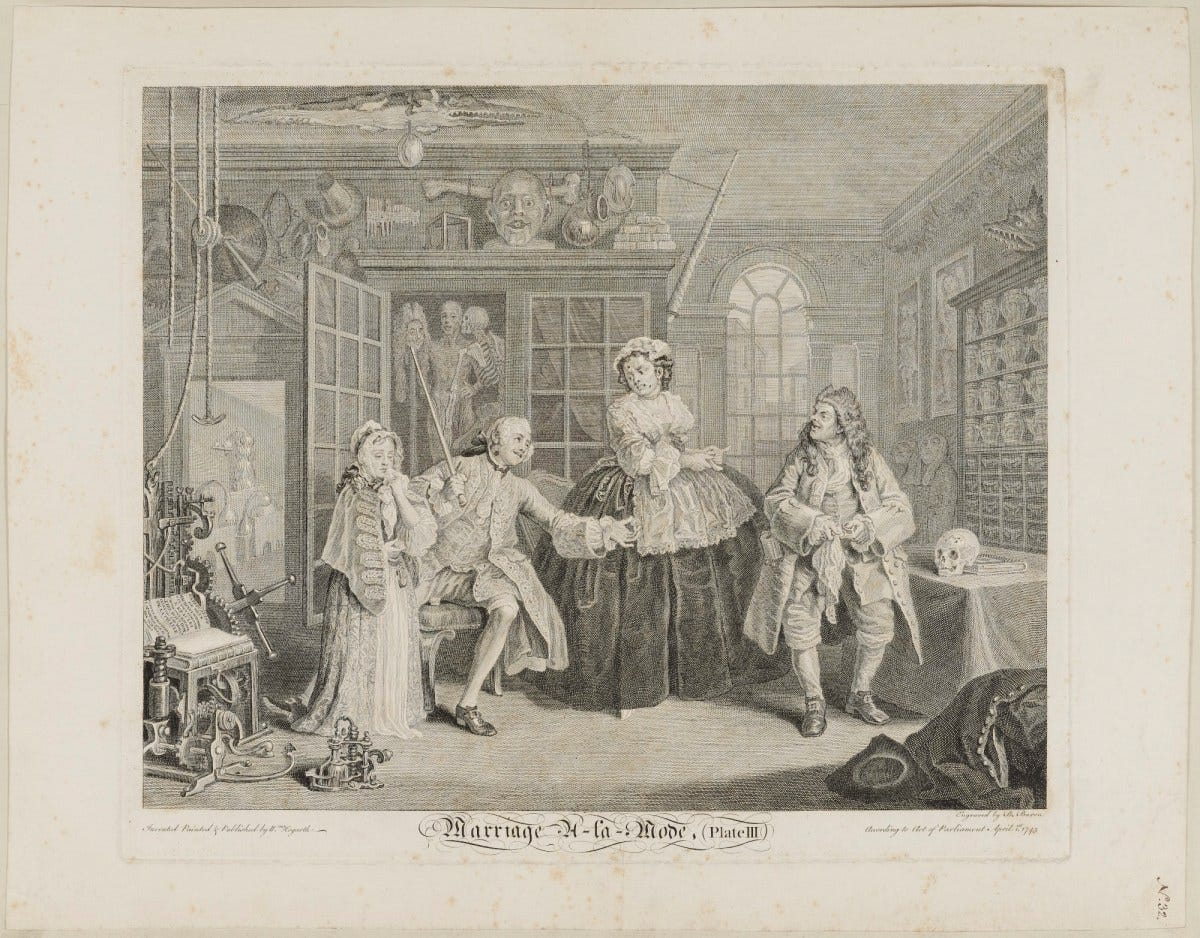In the wake of the industrial age, artists realized they did not have to make art for one person and one person only–their patron. Instead, they could serve the market. And while judging the tastes, demands, and inclinations of the market is harder than judging those of a single patron, it offers greater opportunities for success. The challenge, however, lies in compelling your target market to compete for and collect your work. So how do you do that?
You play on scarcity.
As early as the 1700s, William Hogarth understood scarcity motivated collectors to track his career and collect his work. Limited edition series–like A Harlot's Progress and Marriage A-la-Mode–only included around 1,000 prints. They were marketed as not merely “limited;” but “better,” for they were made with better ink and paper, and thus of higher material quality. This strategic use of scarcity tapped into a fundamental principle of behavioral economics: scarcity.
Limited availability increases perceived value and urgency. When we believe a product is rare, we are more likely to assign greater worth to the item in question. We are also more likely to rush into buying it–and regret it later.
Consider modern-day marketing formulas: “Only 3 seats left;” “Limited stock available;” “Get it before it’s too late;” and “Act now–last chance to buy.” The list goes on. Regardless of phrasing, companies deliberately limit supply to drive demand, amplify appeal, and create a sense of exclusivity.
Scarcity poses a call for action. It works on us like a hot emotional button. “I must hurry,” we think. “The deal’s almost over.” That’s when other powerful emotions come in: on one side, there’s the fear of losing (FOMO); and, on the other, there’s the desire to not regret things later. “Let me get it now,” we decide, and we rush to buy. When stock is unlimited–or perceived as such–we often choose to wait and postpone purchase, often endlessly. When it is limited, the rush of emotions makes us buy now, even if we regret it later.
That’s also true on the luxury market. It is no wonder Andy Warhol, too, revealed his prints in limited editions; Jeff Koons released a limited edition of his signature Balloon Dog figures; Louis Vuitton limited its Artycapucines line to 200 bags, which feature artworks by contemporary artists like Vik Muniz and Zeng Fanzhi. Scarcity sells.
So, a few words of caution: When we encounter signs of scarcity, we should pause and ask ourselves—are we buying the product because it’s right for us, or are we simply caught up in scarcity and acting on impulse?
Irrationally yours,
Dan Ariely













